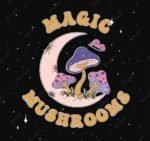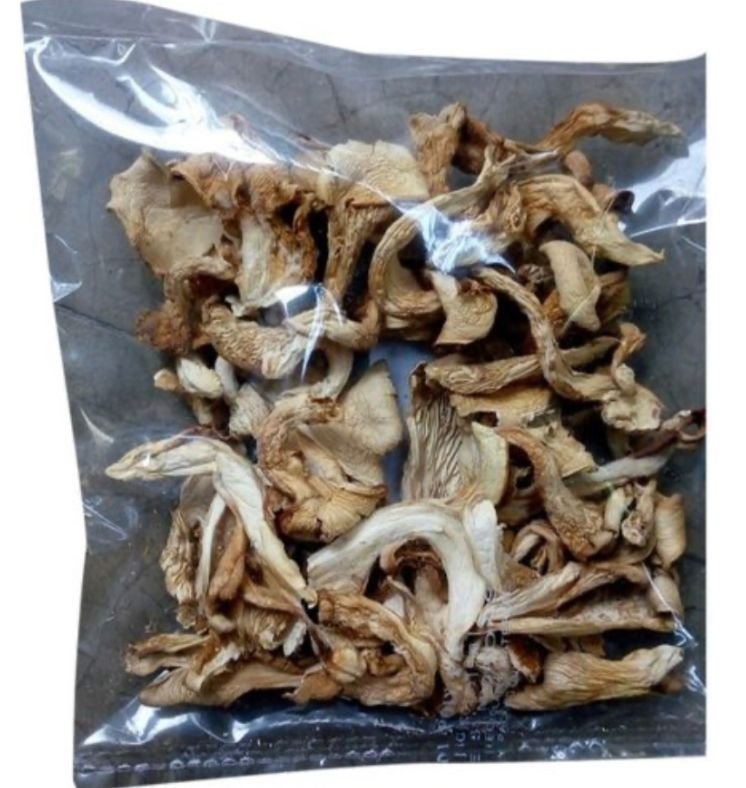Description
The mushroom has a broad, fan or oyster-shaped cap spanning 5–25 cm; natural specimens range from white to gray or tan to dark-brown; the margin is inrolled when young, and is smooth and often somewhat lobed or wavy. The flesh is white, firm, and varies in thickness due to stipe arrangement. The gills of the mushroom are white to cream, and descend on the stalk if present. If so, the stipe is off-center with a lateral attachment to wood. The spore print of the mushroom is white to lilac-gray, and best viewed on dark background.The mushroom’s stipe is often absent. When present, it is short and thick.
Omphalotus nidiformis is a toxic lookalike found in Australia and Japan. In North America, Omphalotus olivascens, the western jack-o’-lantern mushroom and Clitocybe dealbata, the ivory funnel mushroom, both bear a resemblance to Pleurotus ostreatus. Both Omphalotus olivascens and Clitocybe dealbata contain muscarine and are toxic.
Habitat
The oyster mushroom is widespread in many temperate and subtropical forests throughout the world, although it is absent from the Pacific Northwest of North America, being replaced by P. pulmonarius and P. populinus. It is a saprotroph that acts as a primary decomposer of wood, especially deciduous trees, and beech trees in particular. It is a white-rot wood-decay fungus.
The oyster mushroom is one of the few known carnivorous mushrooms. Its mycelia can kill and digest nematodes, which is believed to be a way in which the mushroom obtains nitrogen.
The standard oyster mushroom can grow in many places, but some other related species, such as the branched oyster mushroom, grow only on trees. They may be found all year round in the UK.
While this mushroom is often seen growing on dying hardwood trees, it only appears to be acting saprophytically, rather than parasitically. As the tree dies of other causes, P. ostreatus grows on the rapidly increasing mass of dead and dying wood. They actually benefit the forest by decomposing the dead wood, returning vital elements and minerals to the ecosystem in a form usable to other plants and organisms. Despite this, the belief that P. ostreatus could damage New Zealand’s forestry industry has led New Zealand to ban its importation.
Culinary uses
The oyster mushroom is frequently used in Japanese, Korean and Chinese cookery as a delicacy. It is frequently served on its own, in soups, stuffed, or in stir-fry recipes with soy sauce. Oyster mushrooms are sometimes made into a sauce, used in Asian cooking, which is similar to oyster sauce. The mushroom’s taste has been described as mild with a slight odor similar to anise. The oyster mushroom is best when picked young; as the mushroom ages, the flesh becomes tough and the flavor becomes acrid and unpleasant.
Oyster mushrooms are widely cultivated and used in Kerala, India where a wide variety of dishes are prepared from them. Oyster mushrooms are mainly cultivated in large clear polyethylene bags with buns of hay layered in the bags, and spawn sown between the layers.
Oyster mushrooms are also used in the Czech and Slovak contemporary cuisine in soups and stews in a similar fashion to meat.
Oyster mushrooms contain small amounts of arabitol, a sugar alcohol, which may cause gastrointestinal upset in some people.
Oyster Mushroom
Original price was: $300.00.$230.00Current price is: $230.00.
Oyster Mushroom aka oyster Mushrooms (Psilocybe Cubensis Malabar) originates from the Indian coast of Czech and SlovakCulinary uses
The oyster mushroom is frequently used in Japanese, Korean and Chinese cookery as a delicacy. It is frequently served on its own, in soups, stuffed, or in stir-fry recipes with soy sauce. Oyster mushrooms are sometimes made into a sauce, used in Asian cooking, which is similar to oyster sauce. The mushroom’s taste has been described as mild with a slight odor similar to anise. The oyster mushroom is best when picked young; as the mushroom ages, the flesh becomes tough and the flavor becomes acrid and unpleasant.
Oyster mushrooms are widely cultivated and used in Kerala, India where a wide variety of dishes are prepared from them. Oyster mushrooms are mainly cultivated in large clear polyethylene bags with buns of hay layered in the bags, and spawn sown between the layers.
Oyster mushrooms are also used in the Czech and Slovak contemporary cuisine in soups and stews in a similar fashion to meat.
Oyster mushrooms contain small amounts of arabitol, a sugar alcohol, which may cause gastrointestinal upset in some people.


graliontorile –
Excellent post. I was checking continuously this weblog and I’m impressed! Very useful info specially the closing section 🙂 I maintain such information much. I used to be looking for this certain information for a long time. Thank you and best of luck.